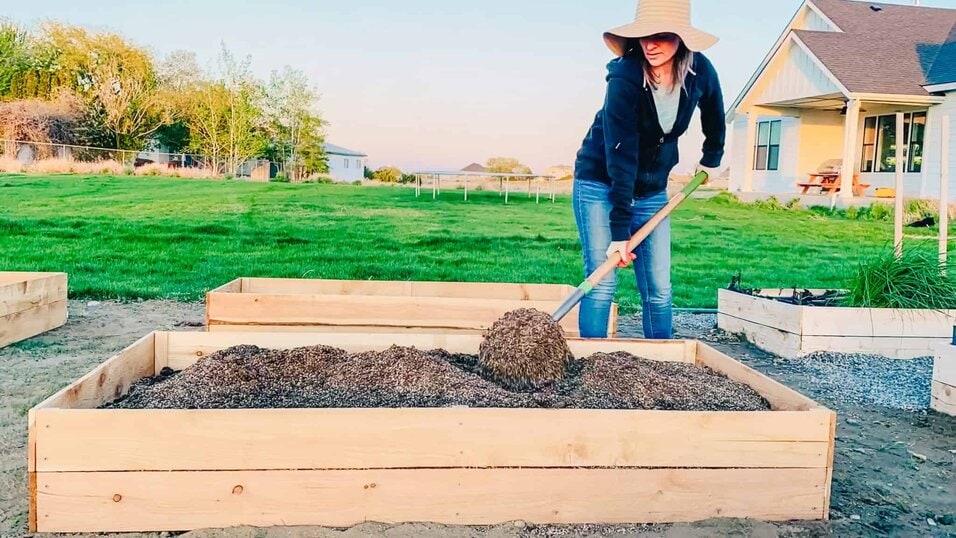If you want a healthy garden, good soil is very important. Raised beds help plants grow better. But the soil inside raised beds must be right. This article tells you how to make the best soil for raised beds. The steps are easy to follow. Anyone can do it.
What Is Raised Bed Soil?
Raised bed soil is the mix of different materials in a garden bed above the ground. It is not just dirt. Good soil holds water, air, and nutrients. It lets plants grow strong roots. It also helps stop weeds and pests.
Regular garden soil might be hard or poor in nutrients. Raised bed soil is made fresh. You control what goes inside. This helps plants grow better and faster.

Credit: www.thunderbirddisco.com
Why Make Your Own Raised Bed Soil?
- You know what is inside the soil.
- You can add nutrients your plants need.
- It drains well but holds water too.
- It is light and easy to work with.
- It reduces weeds and pests.
Buying soil mixes can be expensive. Making your own saves money. Plus, you get fresh soil every time you plant.
Ingredients for Raised Bed Soil
Good raised bed soil needs three main parts. These parts work together to help plants grow.
- Topsoil or Garden Soil: This is the main part. It has minerals and some organic matter.
- Compost: Compost gives nutrients and good microbes to soil. It makes soil rich.
- Other Materials for Drainage and Texture: Things like peat moss, coconut coir, or aged manure help soil hold water and air.
Let’s learn more about each ingredient.
1. Topsoil Or Garden Soil
Topsoil is the upper layer of soil. It contains minerals plants need. You can buy good topsoil or use soil from your garden. Make sure it is clean and free from chemicals.
Avoid heavy clay soil. It gets hard and does not drain well. Also, avoid sandy soil alone. It drains too fast and dries out.
2. Compost
Compost is made from old plants, leaves, and food scraps that decay. It is full of nutrients. It helps plants get strong. Compost also adds helpful tiny living things called microbes.
You can buy compost or make your own at home. Use dark, crumbly compost without bad smells.
3. Other Materials For Drainage And Texture
Peat moss and coconut coir are light materials. They hold water but keep soil soft. Aged manure adds nutrients but must be old to avoid burning plants.
You can also add vermiculite or perlite. These help air reach plant roots.

Credit: www.thunderbirddisco.com
How to Mix Raised Bed Soil
The right mix is very important. Too much of one thing can harm plants. Here is a simple recipe you can follow.
| Ingredient | Amount | Purpose |
|---|---|---|
| Topsoil or Garden Soil | 40% | Main minerals and base of soil |
| Compost | 40% | Adds nutrients and microbes |
| Peat Moss or Coconut Coir | 15% | Holds water and keeps soil soft |
| Perlite or Vermiculite | 5% | Improves air and drainage |
For example, if you have 100 liters of soil mix, use 40 liters topsoil, 40 liters compost, 15 liters peat moss, and 5 liters perlite.
Step-by-Step Guide to Making Raised Bed Soil
- Gather Materials: Collect topsoil, compost, peat moss, and perlite.
- Prepare Your Bed: Clear the raised bed of old plants and debris.
- Mix Ingredients: Use a wheelbarrow or tarp to mix all materials.
- Check Moisture: Soil should be damp like a wrung-out sponge.
- Fill the Raised Bed: Add the mix to your raised bed evenly.
- Level the Soil: Smooth the surface for planting.
Tips for Better Raised Bed Soil
- Use clean, chemical-free ingredients.
- Make compost at home for best results.
- Change soil mix every year for fresh nutrients.
- Test soil pH if possible; most plants like pH 6 to 7.
- Add worm castings to improve soil life.
- Water soil before planting to settle it well.
How to Care for Raised Bed Soil
Good soil needs care to stay healthy. Here are simple ways to keep soil in good shape.
- Add Compost: Each year, add fresh compost to your bed.
- Mulch: Cover soil with leaves or straw to keep moisture.
- Rotate Crops: Change what you plant to avoid soil problems.
- Water Properly: Water deeply but not too often.
- Avoid Chemicals: Do not use strong fertilizers or pesticides.
Common Mistakes to Avoid
Making soil is easy but watch out for these mistakes:
- Using poor-quality or contaminated soil.
- Adding too much compost and making soil too soft.
- Not mixing materials well.
- Ignoring soil moisture; soil too dry or too wet harms plants.
- Forgetting to refresh soil after some time.
Frequently Asked Questions
What Is The Best Soil Mix For Raised Beds?
A mix of compost, topsoil, and peat moss is ideal. It provides nutrients and good drainage.
How Deep Should Soil Be In Raised Beds?
12-18 inches deep is best. This depth supports root growth and retains moisture efficiently.
Can You Use Garden Soil In Raised Beds?
Garden soil alone is too dense. Mix it with compost and peat moss for better aeration.
How Often Should You Replace Soil In Raised Beds?
Refresh soil every few years. Add compost annually to maintain nutrient levels.
Conclusion
Making your own raised bed soil is simple and rewarding. It helps plants grow big and healthy. Use good topsoil, rich compost, and materials like peat moss. Mix them well in the right amounts. Take care of soil by adding compost and mulching. Avoid mistakes and your garden will thrive.
Try this raised bed soil recipe for your next garden project. You will see better plant growth and enjoy gardening more.
5 min read

